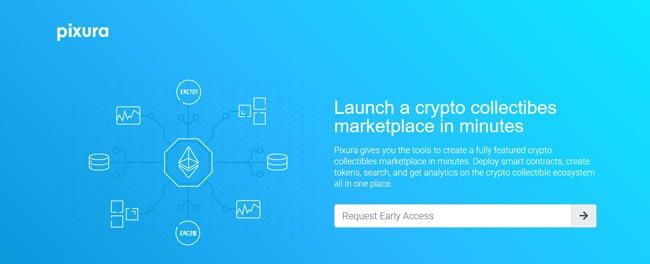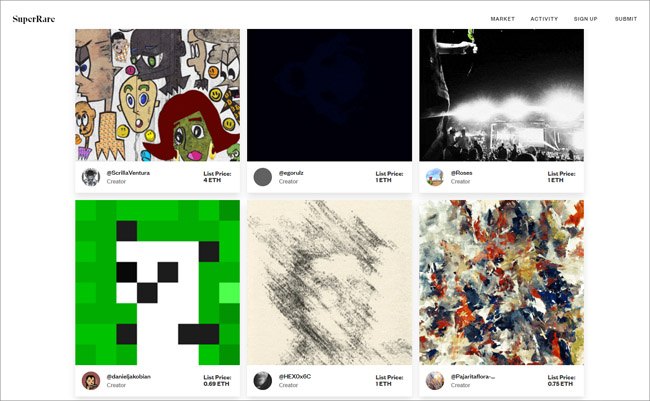When Ethereum launched in 2015, several entities rightfully pegged it as the blockchain platform that could launch its own ecosystem.
While that was proven to be correct with multiple projects and decentralized applications (DApps) originating from Ethereum within a few months of its launch, not many could have seen it coming that those projects and DApps would themselves be able to serve the same purpose as Ethereum in the future, albeit for different sub-segments.
We are now in an age where platforms built on top of Ethereum are now acting as launching pads for other blockchain based projects, creating a multi-layered digital ecosystem that is both intricate and marvelous in its own right.
Pixura is one such project, which while built on Ethereum and its smart contracts, provides necessary tools and functionalities to other ventures in order to have them hatched under its own umbrella.
Since the project recently created some buzz through being picked up by Status Incubate, the startup assistance program from Status, it is high time to look into it and learn exactly what it is that Pixura does and aims to achieve in the blockchain sector.
Pixura Review: Introduction

Founded in November 2017, Pixura was introduced as a platform that intended to bring blockchain’s non-fungible token economy to the forefront.
Non-fungible tokens are non-exchangeable properties. While they are purchased through a single means of value such as Ether, they are not interchangeable with any other tokens on the blockchain.
For instance, Bitcoin, Ethereum and almost all of the available cryptocurrencies are fungible tokens; whereas, application based properties such as CryptoKitties are non-fungible tokens. The use of the term “tokens” is completely technical in this case, since these non-fungible tokens could be virtually anything: a form of media, a piece of code, or a set of information.
Through its focus on non-fungible tokens, Pixura aims to give DApps the chance to grow and flourish the same way that larger blockchains launched through Ethereum did, mostly because of their token economy.
Pixura Review: The Issues That Pixura Aims to Solve
DApps are built with the purpose of being used as simple applications that use some sort of product/service exchange without the use of any utility tokens. Thus, they do not need interchangeable tokens to function optimally. In most cases, the forced use of tokens can actually be detrimental to the user experience.
For instance, let’s take the viewpoint of an application that is based on trading collectible cards, such as CryptoStrikers, another Ethereum based DApp without its own token. If the card trading app uses its own token, it would only be a nuisance because it already has a saleable commodity that does not need to be exchanged with a different token once it has been sold.
However, most startups do not seem to understand that, and their projects sink without making a mark because their use of tokens seems to be too forced. An example that comes to mind here is of Salt Lending, where users needed to buy the utility token just so they could then buy a membership on the platform (which raised the question of why the platform not let the users buy membership directly).
Pixura does not only address that issue, but also allows developers to have a set of helpful tools that can be used to launch propitiously setup marketplaces in the form of DApps. This saves them from having to go through the process of creating a whole blockchain just to serve the purpose of being an collectibles marketplace application. Instead, any product that is being sold through their marketplace DApp could be treated as a non-fungible token.
This minimizes the chances of developers ending up with failed projects, while also opening the door to various opportunities. You could trade art, music, service packages and micro-applications – the ideas are virtually endless. Pixura provides all the tools to explore those possibilities .
Pixura Review: How Does Pixura Work?
Since Pixura is based on Ethereum and has been created on the idea of developing different non-fungible token marketplaces, it already has a wide user-base within its reach in the form of Ethereum users.
By reaching out to the Ethereum community and even those from other blockchains, it aims to bring together creators from different backgrounds to allow them to sell their creations without having to worry about using a utility token.
Apart from freeing these creators of the burden of unnecessary utility tokens, Pixura also allows them to leverage the power of blockchain, where their digital work cannot be stolen from them, its rights are not violated, and it is not unjustly replicated in any form.
These promises have allowed Pixura to emerge as a potential powerhouse of a platform that could change the way certain business models work on the blockchain.
For instance, many blockchain projects have emerged in the past year where they promise specific marketplaces to their uses, but their usage of utility tokens as the exchange for users’ creations affects the overall functionality of such a platform. By steering clear of this pathway and instead allowing creators direct access to deserved funds, the marketplaces created through Pixura could be unique in their own right.
Pixura has not held an initial coin offering (ICO) of its own. Instead, it has garnered the attention of private investors and incubators such as Status Incubate to kickstart its project. Therefore, the project does not have a whitepaper, but what it does have is a website and a Github page, as well as various social media pages that serve as a point of reference to what it does and how it achieves the said functions.
According to the early access information, Pixura provides interested developers with a set of Ethereum-based smart contract blueprints; GraphQ, and websocket query abilities; and data sourcing for development references among many other features. By using these tools, said developers could create their own marketplace applications for specific uses.
Pixura Review: SuperRare is Pixura’s First Marketplace
While Pixura is still in early access mode, it has already launched its first marketplace by the name of SuperRare, which deals in digital art pieces as non-fungible tokens.
These pieces could be owned by those who appreciate the form of digital art, they come in various sub-segments ranging from abstract art to GIFs, and from pop art to sketches.

A screencap of SuperRare’s marketplace, showing different kinds of digital art for sale with their price
The price for each piece is listed next to it, and interested buyers could simply go ahead with purchasing any piece that they like. Once they purchase the piece, it becomes theirs to own according to what the artist has mentioned in the terms and conditions.
This new way of acquiring art is just one of the many uses of the Pixura platform, which aims to revolutionize how DApps and non-fungible tokens’ marketplaces could work on a larger scale.
Pixura Review: The Team

Pixura is spearheaded by CEO John Crain, who has previously worked with BlockApps and ConsenSys, two US-based blockchain development firms.
Apart from Crain, the firm’s senior management has Jonathan Perkins in the form of its chief product officer, who has worked with entities named Reaktor and CrewSpark; and Charles Crain as its chief technology officer, who also has work experience with BlockApps.
The team sounds proficient in terms of blockchain development, and the incubation support that it has received from Status alludes to its credibility. The fact that a beta product is already available in the form of SuperRare also adds to Pixura being a reliable entity.
Pixura Review: Does Pixura Sound Like a Viable Platform?
In its current state, Pixura does have the makings of a viable platform considering that it has a clear model of function, a precise objective, and a working product on its portfolio. While it is a rare kind of platform it is certainly needed.
Pixura and its benefits to developers as a toolkit seem quite promising but it could be very useful in other aspects as well. A product such as Pixura is beneficial because collectibles and games can attract a significant audience and base of users not just for Pixura but for Ethereum as well.
All in all, Pixura does seem like a great choice in the expansion of non-fungible token platforms. It has done a good job in marketing so far and Status’ interest in it has given the venture a significant push in terms of user awareness; however, it still has a long way to go in terms of reaching an interest level that could help it achieve the kind of growth that it is looking for in the blockchain sector.